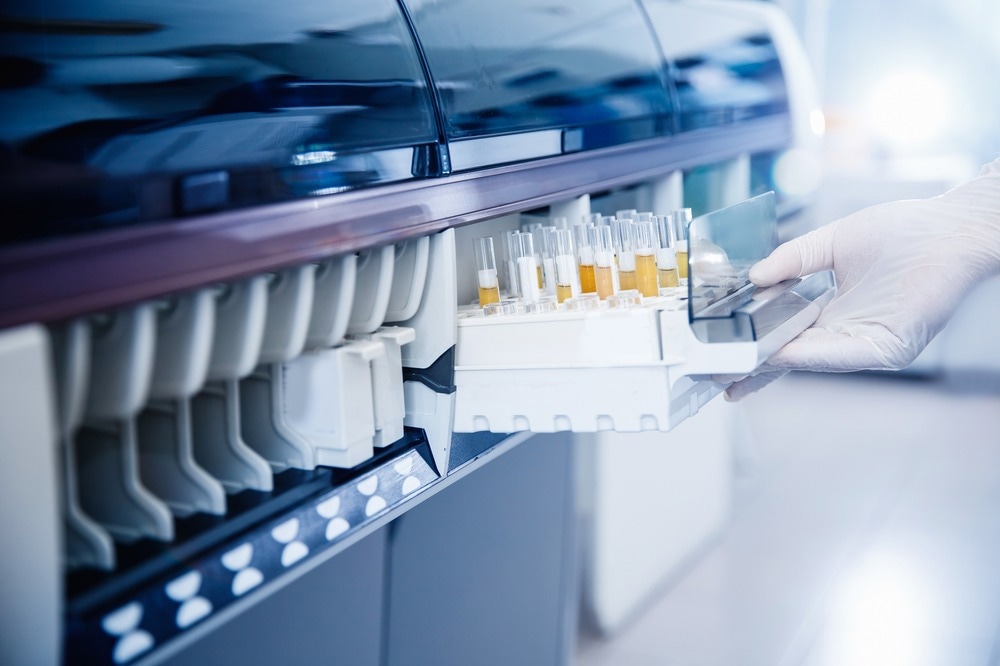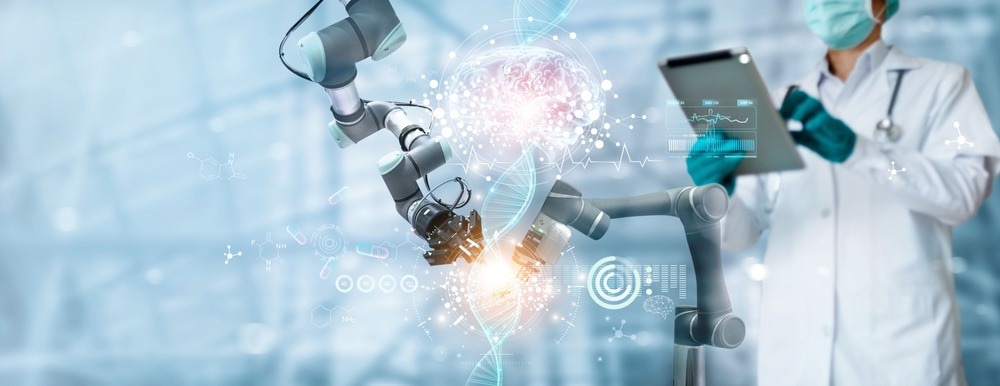Laboratory automation is essential for helping scientific research move forward. While automation is now commonplace in laboratories across the globe, it is yet to reach its full potential. Over the next decade, the drive for miniaturization and advanced genetic analytical tools will help fuel the impressive growth of the laboratory automation industry. Here, we discuss the industry's key applications and recent developments, the state of the current global market, and future predictions.
Application Areas of Laboratory Automation
There are numerous benefits to automating laboratory processes. Due to the value that automation can add to a laboratory, the technology has been developed for use in several applications within this context. Many automation applications in laboratories aim to remove human error from important processes.
Traditional labs require trained technicians to carry out tasks that can be monotonous, time-consuming, and repetitive. Examples of such tasks include aliquoting, colony counting, centrifugation, de-capping, recapping, and sorting. Automation has developed so that software and robotics can replace humans in carrying out these tasks.
Automation can be incorporated into laboratories in a number of ways. Total laboratory automation is where all stages of laboratory processes are automated. Automating one or multiple steps of the laboratory's workflow is also common. Technologies have been developed that manage pre-analytical automation, where sample/reagents are stored; analytical automation, which involves the experimental stages of the workflow; and post-analytical automation where
By replacing human workers with automated robotics, laboratory processes can be enhanced in terms of accuracy, speed, replicability, and reliability. They can also increase the safety of certain processes and bring down overheads by reducing the reliance on skilled human workers who can be redeployed to areas that require more complex thinking and insight.

Image Credit: Parilov/Shutterstock.com
Recent Developments in Laboratory Automation
As technology that supports laboratory automation, such as sensor technology, artificial intelligence (AI), and machine learning matures, new applications and capabilities of laboratory automation technology emerge. Currently, we are seeing a number of key developments occurring in this field.
First, automated contextualization is becoming more sophisticated and relied upon within scientific laboratories. In recent years, technology has become increasingly capable of collecting fine-grain data and larger datasets, which means higher-quality data. This has led to a greater focus on collecting, analyzing, and learning from data collected automatically. Automation has allowed scientists to gather higher-quality data, helping them form more accurate and insightful conclusions from their work.
While gathering and analyzing data is very important for drawing scientific conclusions, a new challenge has emerged alongside the generation of larger and larger datasets. Scientists have recently been faced with the problem of the 'data lake' - large datasets collected that have no context and, therefore, have no meaning. To overcome this issue, labs incorporating automation focus on developing their capabilities in organizing and contextualizing data so that it has meaning and can be used to inform conclusions and/or decisions. Contextualization of data requires advanced software, an emerging trend in the field.
Second, as overheads for physical space become more expensive, laboratories are increasingly motivated to adopt technology with a smaller physical footprint. Modular laboratory automation is helping laboratories to utilize their workspace and reduce operational costs efficiently. The first laboratories with integrated robotics for workflow automation were designed inwardly facing. This setup did not allow for scientists to utilize the robotic equipment in a way that realized its full potential, nor did it allow for interactions between humans and robots. With modular laboratory automation, scientists are opening out the space so that labs are able to develop flexibly and adapt to incorporate new technology. This system fosters process optimization, as it allows old technology to be switched out for new ones or added to. This gives greater scope for innovation, allowing scientists to change their processes without disrupting the entire workflow.
Current Global Market of Laboratory Automation
The global laboratory automation market was valued at $5.16 billion in 2021 and is predicted to grow at a CAGR of 7.6% between 2022 and 2029. It is estimated that the global market will reach $9.27 billion by 2029. In Europe, the market is expected to grow at a slightly slower rate, at a CAGR of 5.79% between 2021 and 2028.
The industry's strong growth is being fueled, in part, by the expanding demands of the healthcare sector. As a result, pharmaceutical and biotechnology companies are investing in research and development. For example, it has recently been reported that companies in the sector are investing as much as 10% of their sales revenues into research and design.
Key global players have been identified as Thermo Fisher Scientific Inc. (US), Beckman Coulter, Inc. (US), Hudson Robotics (US), BD (US), Synchron Lab Automation (Netherlands), Agilent Technologies, Inc. (US), Siemens (Germany), Tecan Trading AG (Switzerland), PerkinElmer Inc. (US), INPECO SA (Switzerland), F. Hoffmann-La Roche Ltd (Switzerland), Abbott (US), Shimadzu Scientific Instruments (Japan), QIAGEN (Germany), Hamilton Company (US), bioMérieux (France).

Image Credit: PopTika/Shutterstock.com
Future Directions for Laboratory Automation
Currently, much research is underway in the field of laboratory automation. In particular, increased demand for miniaturization has led to many research projects aiming to establish novel automation systems and workstations that take up less physical space than current technology. The sectors of biotechnology, microbiology, and clinical chemistry, are driving this demand for miniaturization, as they pose a strong need for the miniaturization of research processes alongside the automation of complex processes. This drive for miniaturization will likely result in novel automation technologies over the next decade.
In addition, recent developments in genetics have generated a great demand for the automation of cutting-edge genetic analysis tools. In the past, much genome analysis was done by nucleic acid sequencing. Today, this has greatly shifted to the biological functional analysis of individual genes. It is predicted that genome diagnostics will soon become a widely available tool in scientific research. Recent studies have revealed that methods using magnetic particles are a promising avenue for developing automation in genetic analytics. It is likely that we will see much more development in this direction in the coming years.
Final Thoughts
The field of laboratory automation is growing fast. Key drivers, such as demand for miniaturization and novel genomic analytical tools, will shape the industry's evolution in the coming years. However, their many applications of laboratory automation are yet to be realized, and these will likely begin to emerge in the next decade as the demands of the healthcare industry change.
Sources:
- 2022. Total Lab Automation Market Comprehensive Study Explores Huge Growth of USD 9.27 billion by 2029 With Share, Trends, Growth and Key Players Analysis [online]. PRNewswire. Available at: www.prnewswire.co.uk/.../...th-and-key-players-analysis-853391966.html (Last accessed August 2022)
- Moya, E., Vandenhaute, E., Rizzi, E., Boucau, M., Hachani, J., Maubon, N., Gosselet, F. and Dehouck, M., 2021. Miniaturization and Automation of a Human In Vitro Blood–Brain Barrier Model for the High-Throughput Screening of Compounds in the Early Stage of Drug Discovery. Pharmaceutics, 13(6), p.892. https://www.mdpi.com/1999-4923/13/6/892
- Obata, K., Tajima, H., Yohda, M. and Matsunaga, T., 2002. Recent developments in laboratory automation using magnetic particles for genome analysis. Pharmacogenomics, 3(5), pp.697-708. https://pubmed.ncbi.nlm.nih.gov/12223054/
- Silva, T., Eppink, M. and Ottens, M., 2021. Automation and miniaturization: enabling tools for fast, high‐throughput process development in integrated continuous biomanufacturing. Journal of Chemical Technology & Biotechnology, 97(9), pp.2365-2375. https://onlinelibrary.wiley.com/doi/full/10.1002/jctb.6792
Further Reading
Last Updated: Oct 28, 2022